Fly Fishing for Beginners
From afar, fly fishing for beginners can seem intimidating. We’re here to assure you that it can be rewarding and fun! Here is a checklist of everything you need to have a successful day fly fishing on the Caney Fork River:

Tennessee Fishing License
- Whether you’re fishing on the lake or the river, you will be required to purchase a Tennessee Fishing License. To obtain a fishing license, go to https://gooutdoorstennessee.com/. On the home page, click on the box that says “Licensing”. You will need to create a profile before purchasing your license. If you’re fishing for trout on the Caney Fork River, you will be required to purchase a trout permit in addition to your fishing license.
Generation Schedule
- Center Hill Dam is a hydroelectric dam owned and controlled by the Army Corps of Engineers. The Caney Fork River is a tailwater of Center Hill Lake, meaning that the levels and flow of the river are determined by water released from Center Hill Lake at the dam. Water levels can change without notice due to weather changes or power requirements. Always use caution when fishing, especially wade fishing.
Before fly fishing on the Caney Fork, learn about the generation schedule for the day. You can access the generation schedule here: https://www.tva.com/Environment/Lake-Levels/Center-Hill
Equipment
- Fly Rod, Fly Reel, and Fly Line: When choosing a fly rod while fly fishing for beginners, it’s important to think about the fly line size. For example, you would want a thicker, heavier fly line when fishing with large streamers and a more delicate, lighter line when fishing with tiny dry flies. For most trout, panfish and bass, a 9-foot 5-weight rod with a 5-weight line is a great starting point. For larger fish (using larger streamer flies), you might want to go with a larger rod, reel and line. If you’re fishing on a small stream with a lot of trees, you might want to use a shorter rod with a lighter-weight line. When choosing your equipment, it’s important that the size of the fly line matches the size of the rod and the reel.
- Leaders/Tippet: At the end of your fly line, you will want to attach a leader. The leader is relatively invisible in the water, so the fish cannot see your line. The leader also helps to slow down your cast and helps you to present the fly delicately onto the water. You will want to choose a knotless, tapered leader. For the Caney Fork, a 9-foot tapered leader in the size 4X is perfectly adequate.
As your leader gets shorter over time (from adding/removing flies, knots, etc.), you can simply add more tippet to the end of the leader. I won’t go into the nuts and bolts of tippet in this post, but I will provide some resources at the end of the article so that you can do some additional research if that interests you.
- Flies & Fly Box: While other types of fishing refer to what’s on the end of your line as “bait”, we use artificial flies in fly fishing. We try to mimic what the fish is naturally eating in the river. When fly fishing for beginners, small nymphs and streamers are good options for you to start with. Some examples of nymphs include size 16-24 Zebra Midges, Prince Nymphs, Copper Johns and Pheasant Tails. Examples of streamers include Wooly Buggers and Clouser Minnows. A fly box is also a necessity to keep your flies organized and easy to access.
- Waders & Wading Boots: While waders and wading boots are not essential, they make fly fishing for beginners more comfortable and allow you to fish all year long. Waders come in a variety of sizes and styles. When selecting wading boots, some choose to size up a size so that you can easily fit your wading boots over the neoprene boots of your waders. Some anglers choose to put metal studs in the bottom of their wading boots to help with traction on slippery rocks. It’s important to remove your wading boots if they have studs before stepping into a guide’s boat as the studs could scratch the bottom of the boat. I encourage you to try on some different styles of waders and wading boots to find what works best for you.
Caney Fork River Rainbow Trout


- Packs: When fly fishing for beginners, you might want a small pack or vest to keep your fly boxes, snacks, water bottle and other tools handy. It’s always important to prepare for any type of weather, so you might want to pack another layer or rain jacket.
We also believe in a Leave No Trace mentality. You can use your pack to store trash (and maybe even trash that you pick up while you’re out there!). If you pack it in, you need to pack it out. We encourage you to leave the river/riverbank better than when you found it.
- Tools & Accessories: With fly fishing for beginners, we encourage catch and release fishing to allow fish to grow larger and to maintain the health of the fishery. To remove flies, keep a pair of forceps handy either attached to your waders or to your pack so that you can easily access them when you bring that fish to your net. Speaking of nets, this is also something to consider so that you can easily land your fish. We recommend a net with a rubber netting so that your flies don’t get stuck. The rubber netting also helps to maintain the protective coating on the fish so it can live another day.
When tying on flies or adding tippet, you will want to use a pair of nippers to cut off the tag end of the material. While small nail clippers will suffice, you can purchase nippers for this application.
- Hat & Sunglasses: I encourage anyone who is casting a fly with a hook to wear a hat and sunglasses. In windy conditions or when just learning to cast, accidents can happen. It’s important to cover your head and eyes to help prevent injury.
More Info
For more information about casting techniques, flies, equipment, knots and more, you can visit the Orvis Fly Fishing Learning Center at www.howtoflyfish.orvis.com. And for a few more tips and tricks for a more seasoned fly fisher, check out the Pro Tips and Tricks HERE. Have fun on the water!
All of these items are useful when wade fishing or fishing from a boat. However, if you are fishing with a guide, all equipment is provided. You just need a fishing license! To book a trip with Andy Mahurin Fly Fishing, reach out to Canoe the Caney.
Written by: Abbie and Andy Mahurin
Click HERE to book your guided fly fishing trip with Canoe the Caney today!







